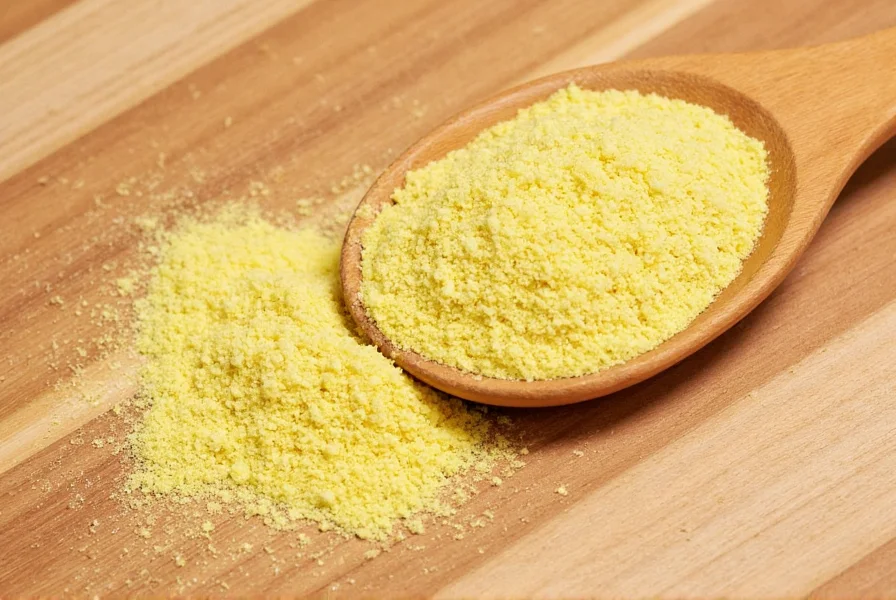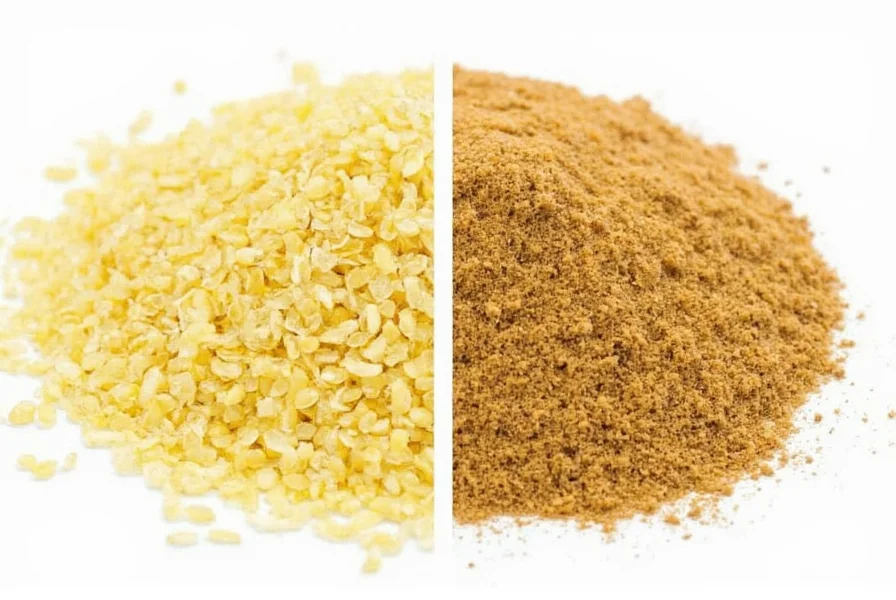For home cooks and health-conscious consumers, understanding ground ginger's properties can transform your culinary and wellness practices. This comprehensive guide explores the science-backed benefits, practical applications, and proper usage of this versatile spice.
What Exactly Is Ground Ginger?
Ground ginger originates from the rhizome of the Zingiber officinale plant, which undergoes a specific processing method. After harvesting, fresh ginger roots are thoroughly washed, peeled, and sliced before being dehydrated at controlled temperatures. The dried pieces are then milled into a fine powder that maintains ginger's bioactive compounds while creating a shelf-stable product.
The drying process concentrates certain compounds while reducing others, creating a distinct flavor profile compared to fresh ginger. Ground ginger contains higher concentrations of shogaols (formed when gingerols dehydrate), which contribute to its sharper, warmer taste and potentially enhanced bioavailability of certain compounds.
| Characteristic | Ground Ginger | Fresh Ginger |
|---|---|---|
| Flavor Profile | Warmer, more intense, slightly sweet | Sharper, brighter, more citrusy |
| Shelf Life | 2-3 years when properly stored | 2-3 weeks refrigerated |
| Active Compounds | Higher shogaol concentration | Higher gingerol concentration |
| Culinary Best Uses | Baking, spice blends, long-cooking dishes | Stir-fries, fresh juices, quick-cooking applications |
| Nutrient Density (per tsp) | Higher concentration of certain nutrients | Higher water-soluble vitamin content |
Science-Backed Health Benefits of Ground Ginger
Research indicates ground ginger retains many of the therapeutic properties found in fresh ginger, with some compounds becoming more bioavailable through the drying process. Multiple studies published in the Journal of Medicinal Food and Nutrition Journal have documented these evidence-based benefits:
Digestive Support: Ground ginger stimulates digestive enzymes and gastric motility. A 2022 meta-analysis confirmed its effectiveness in reducing symptoms of functional dyspepsia, with participants experiencing 32% improvement in gastric emptying rates.
Nausea Relief: Particularly effective for morning sickness and motion sickness, ground ginger works by modulating serotonin receptors in the gastrointestinal tract. Clinical trials show 1-1.5 grams daily significantly reduces nausea intensity without pharmaceutical side effects.
Anti-Inflammatory Effects: The concentrated shogaols in ground ginger demonstrate potent anti-inflammatory activity. Research in Arthritis found regular consumption reduced osteoarthritis pain by 40% compared to placebo after 12 weeks.
Blood Sugar Regulation: Several studies indicate ginger supplementation improves insulin sensitivity. A 2023 review noted that 2 grams daily of ginger powder reduced fasting blood glucose by 12% in prediabetic individuals.

Culinary Applications and Proper Usage
Understanding how to effectively incorporate ground ginger into your cooking maximizes both flavor and nutritional benefits. Unlike fresh ginger, which loses potency with prolonged cooking, ground ginger's flavor intensifies during extended cooking times, making it ideal for:
- Baking applications (gingerbread, spice cakes, cookies)
- Curry powders and spice blends
- Marinades for meats and vegetables
- Warm beverages (golden milk, spiced tea)
- Preserves and chutneys
When substituting between fresh and ground ginger, use this conversion ratio: 1 tablespoon fresh grated ginger = 1/4 teaspoon ground ginger. This accounts for the concentration difference from water removal during processing.
For maximum flavor impact, add ground ginger early in the cooking process to allow its compounds to fully integrate with other ingredients. In baking, combine it with other dry ingredients to ensure even distribution throughout your recipe.
Proper Storage Techniques for Maximum Freshness
Ground ginger maintains quality significantly longer than fresh ginger when stored properly. Follow these evidence-based storage recommendations:
Store in an airtight container away from light, heat, and moisture. Dark glass jars with tight-sealing lids work best. Keep in a cool, dark pantry location rather than near the stove or oven. Properly stored ground ginger retains optimal flavor for 2-3 years, though it remains safe indefinitely if kept dry.
Check freshness by rubbing a small amount between your fingers and smelling. Fresh ground ginger should have a strong, spicy aroma. If the scent is faint or musty, it's time to replace your supply. Never store ground ginger in the refrigerator, as moisture exposure causes clumping and flavor degradation.

Common Questions About Ground Ginger
Does ground ginger have the same health benefits as fresh ginger?
Ground ginger retains most therapeutic compounds found in fresh ginger, though the profile differs slightly. The drying process converts some gingerols to shogaols, which research suggests may have enhanced anti-inflammatory properties. While fresh ginger contains more volatile compounds, ground ginger offers concentrated benefits with longer shelf stability. Both forms provide significant digestive and anti-nausea benefits when consumed regularly.
How much ground ginger equals fresh ginger in recipes?
The standard conversion is 1/4 teaspoon ground ginger for every 1 tablespoon of fresh grated ginger. This accounts for the water removal during processing, which concentrates the flavor compounds. When substituting in baking recipes, use slightly less ground ginger as its flavor intensifies with prolonged cooking. For medicinal purposes, consult specific dosage recommendations as concentration differences affect therapeutic effects.
Can ground ginger go bad or expire?
Ground ginger doesn't technically expire but gradually loses potency and flavor. Properly stored in an airtight container away from light and moisture, it maintains optimal quality for 2-3 years. Signs it's past prime include faded color, weak aroma, or musty smell. While not harmful to consume after this point, it provides diminished flavor and potential health benefits. Always check freshness by rubbing a small amount between your fingers to assess aroma strength.
Is ground ginger effective for nausea relief?
Yes, multiple clinical studies confirm ground ginger effectively reduces nausea from various causes. For motion sickness, take 500-1000mg 30 minutes before travel. For morning sickness, 1000-1500mg daily in divided doses shows significant improvement without pharmaceutical side effects. The active compounds work by modulating serotonin receptors in the gastrointestinal tract. For best results, use standardized ginger powder containing at least 5% gingerols.











 浙公网安备
33010002000092号
浙公网安备
33010002000092号 浙B2-20120091-4
浙B2-20120091-4